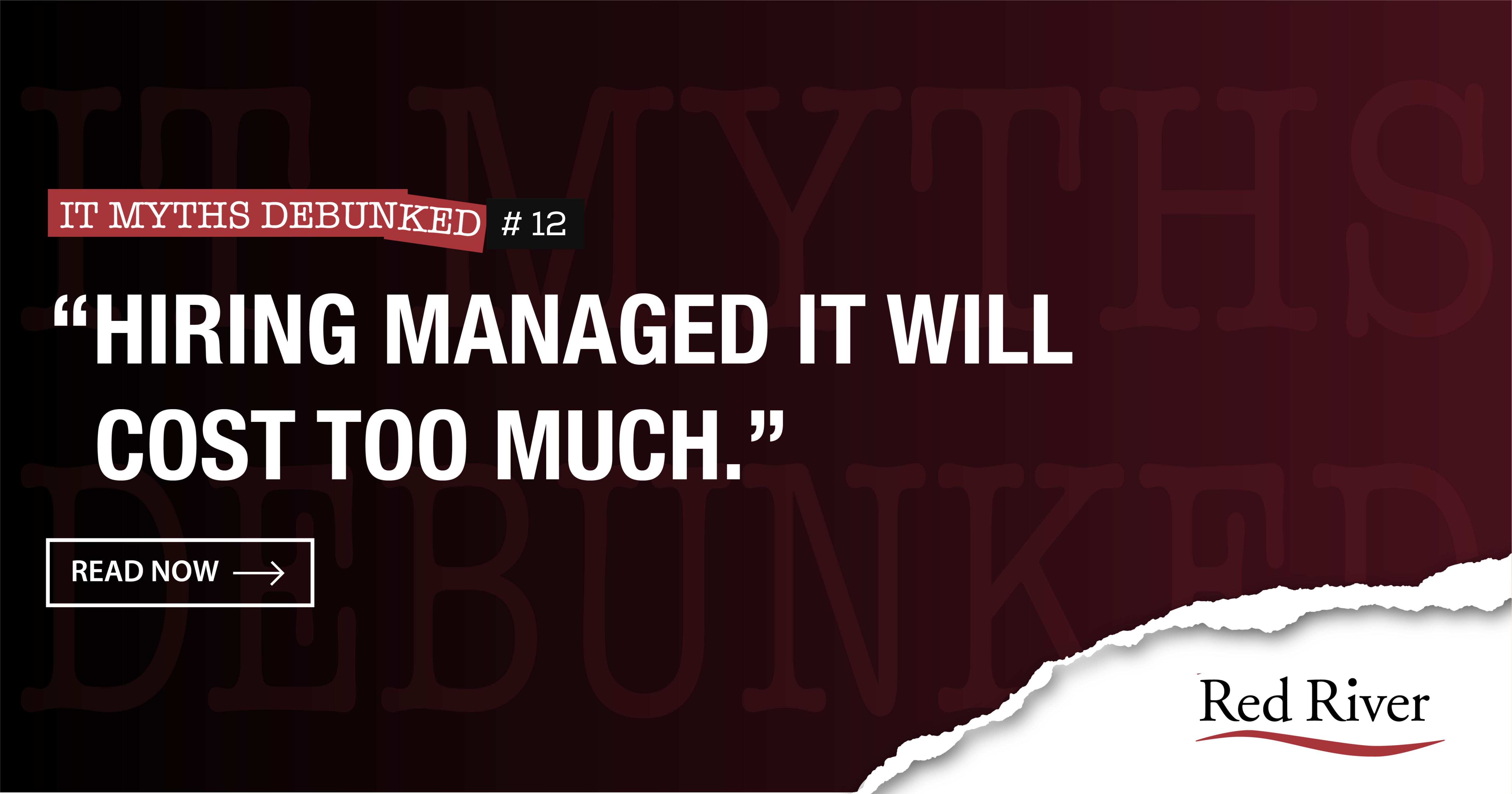
“Hiring Managed IT Will Cost Too Much” Debunked
You’re discussing whether to hire managed IT services at a meeting, but many people are concerned about the cost. Will managed IT support pricing outpace your existing, internal IT expenditures? What is the average cost of IT support services — and can you determine the IT service cost in advance?
The Cost of IT Managed Services
An issue with managed IT services cost is that the costs will vary tremendously based on business. There’s no “typical” managed IT services pricing. It depends on the provider.
There are common models. Some are per device or per user. Many are tiered based on the services that you require. A managed services provider can guide you toward the best solution for you — their goal is to save you money so that you continue to use their services.
Why do people often think that managed IT services will be expensive? This misconception comes from how internal IT departments usually cost a lot to fully staff. But managed services providers have a lot of advantages over internal IT departments. They can maintain a large array of specialists and technicians — and they have the technology and tools to resolve situations faster. More importantly, you’re not paying the salary for every employee at your MSP like you would an internal IT team.
And, of course, the service provider does matter. There will always be MSPs that are more expensive than others. An organization that just wants an MSP to bolster their existing services is never going to pay as much as an organization that wants their service provider to take over the entirety of their IT. This is another consideration. Companies that do want to save money can do so by outsourcing only the necessary services to MSPs.
Managed Services vs. Internal Services
Of course, when people say that “managed IT costs too much,” they’re thinking about it relative to the cost of internal IT. So, how do managed IT services stack up when compared to internal IT?
First, it’s become very competitive to try to hire IT internally. Often, a company may not be able to afford to hire the best-of-the-best — but they can access this talent through a managed services provider. When it comes to IT, needs are often 24/7. That means a company needs to pay someone to remain on call. With a managed services provider, the company only need to pay for the hours of service that they use.
Many companies are able to save a substantial amount of money by freezing hiring on their internal IT department and switching to an MSP. But reducing headcount or freezing hiring isn’t strictly necessary, either. Companies can opt to have their internal IT departments integrate with the MSP, to provide the best of both worlds.
While managed services can deliver a lot more to an organization in terms of talent and tools, they can often do it at a lesser cost. These costs are distributed among all the clients of the managed services provider, rather than a single client having to pay for them on their own. A good MSP will almost universally cost less than an internal IT team, as long as an apples-to-apples comparison is being made regarding the services provided.
The Benefits of Managed Services on ROI
There’s more to consider in terms of managed IT services than the raw cost alone. There are benefits of managed services that have a significant impact on ROI, including:
- Reduced downtime. MSPs have the technology needed to detect issues before they occur — and faster response times, so they can address problems regardless of when they happen. Downtime can cost organizations thousands of dollars per hour, depending on how reliant the organization is upon their systems. The more reduced the downtime, the better the ROI of the organization.
- Mitigating breaches. A single data breach can be significant enough to all but destroy a company. Not only are there costs related to liability, but the organization can find itself with negative publicity. An MSP can work to fix these breaches before significant damage occurs. Data breaches are counted in terms of minutes, with each subsequent minute costing the organization more in terms of both cost and lost data and productivity.
- Planning extensive upgrades. Many organizations put off necessary upgrades and updates because they don’t have the internal staff power to do so. But these upgrades could be critical to the security and efficiency of the organization. A managed IT service can create a game plan for the organization and provide support for these extensive upgrades, thereby making it faster and easier for the organization to upgrade its systems.
In short, managed services don’t need to be expensive — and they can save money for an organization in many ways. But you won’t know exactly how much a managed service will cost until you consult with a managed services professional. Contact us today to find out more about what we can do for you.

written by
Corrin Jones
Corrin Jones is the Director of Digital Demand Generation. With over ten years of experience, she specializes in creating content and executing campaigns to drive growth and revenue. Connect with Corrin on LinkedIn.




